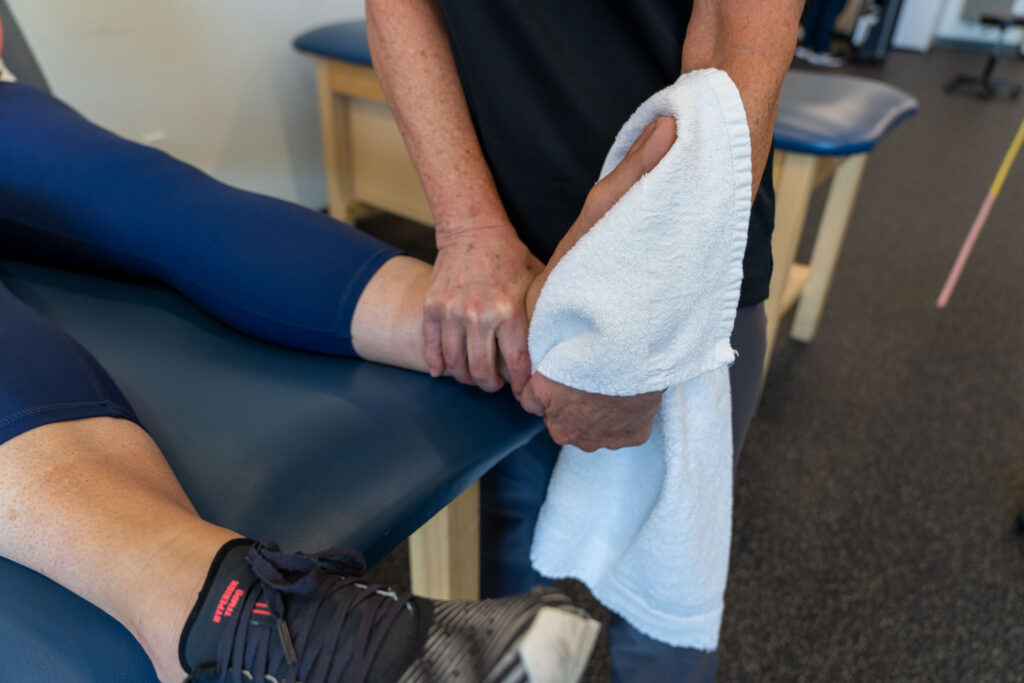
Ankle Pain
Rolled your ankle? Dealing with instability or swelling? Ivy Rehab can help you regain strength, balance, and peace of mind.
Why does my ankle hurt?
Your ankle supports every step you take, and when it’s injured or unstable, it can throw off your entire movement system. Pain might follow a sudden injury like a sprain or come from long-term wear and tear.
Common causes include:
- Ankle sprains or strains
- Tendinitis
- Chronic instability
- Post-surgical recovery
Poor joint alignment or weakness


Signs It’s Time to Take Action
Some ankle injuries heal quickly. Others don’t – and that’s okay. It’s time to see a physical therapist if you notice:
- Ongoing pain, swelling, or stiffness
- Frequent ankle sprains or a feeling of instability
- Trouble walking on uneven surfaces
- Fear of re-injury during daily activities or sports
Common Myths About Ankle Pain
Many people think a sprained ankle will just get better with time and rest, but untreated injuries can lead to long-term instability or recurring problems. One of the biggest myths is that once it heals, it’s fixed for good. Without rehab, repeat ankle sprains are very common. And while rest plays an important role, it doesn’t replace the need for strengthening, mobility work, and retraining movement. That’s where physical therapy makes a real difference – by helping you regain stability and reduce your risk of future injury.

How We Provide Ankle Pain Treatment
Whether you’ve had multiple ankle sprains or are just feeling off balance, our therapists work to rebuild strength and stability.
Treatment may include:
- Balance and proprioception training
- Strengthening for surrounding muscles
- Manual therapy and joint mobilization
Gait and movement retraining
Ankle Pain Exercises for Recovery
Every plan includes exercises to help you recover safely and build resilience:
- Balance and stability work
- Resistance band strengthening
- Ankle mobility drills
- Targeted stretches for tight calves or tendons
When to See an Ankle Pain Specialist
Recurring ankle sprains, lingering soreness, or a general feeling of instability are all signs it’s time to seek care. The sooner we start, the faster you’ll get back to strong, steady steps.

Your recovery starts with one step.
Let’s build strength, improve stability, and keep you moving with confidence. Find a clinic near you and book your appointment today.

